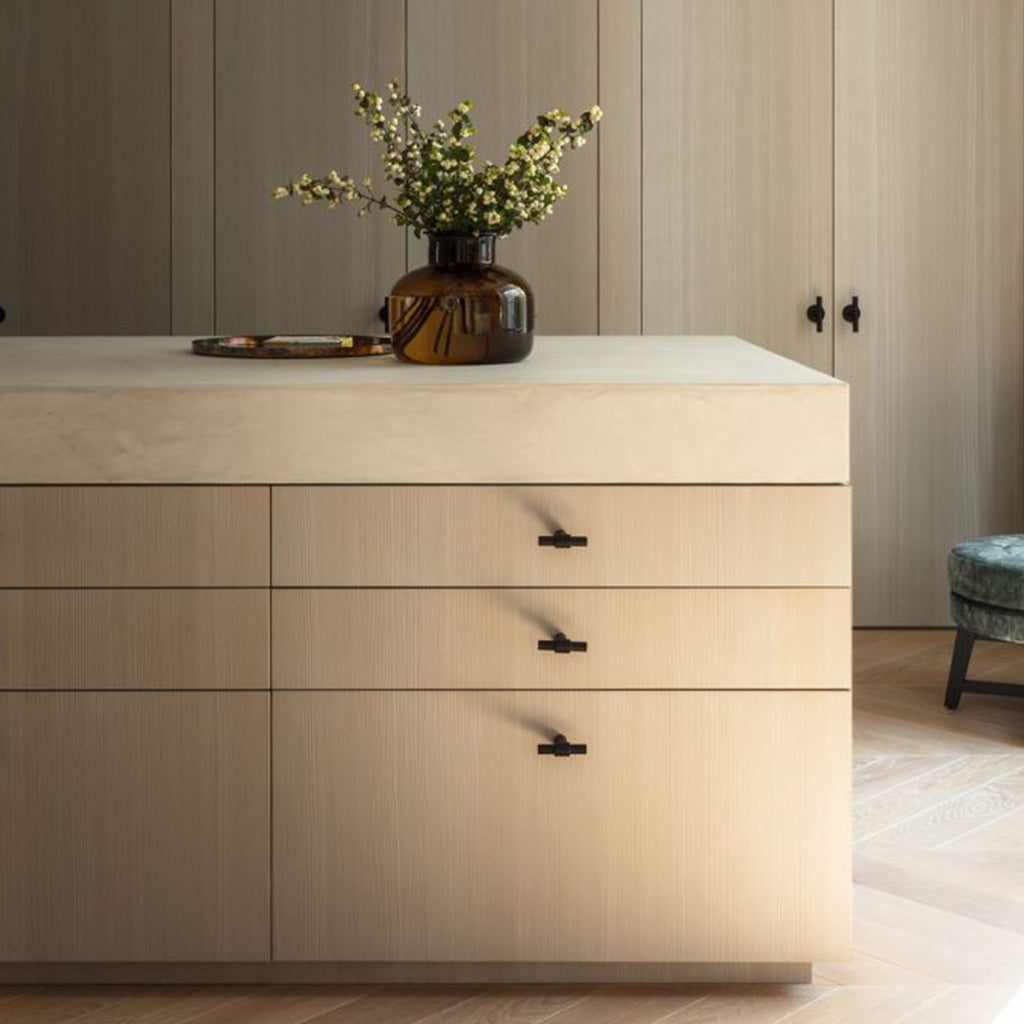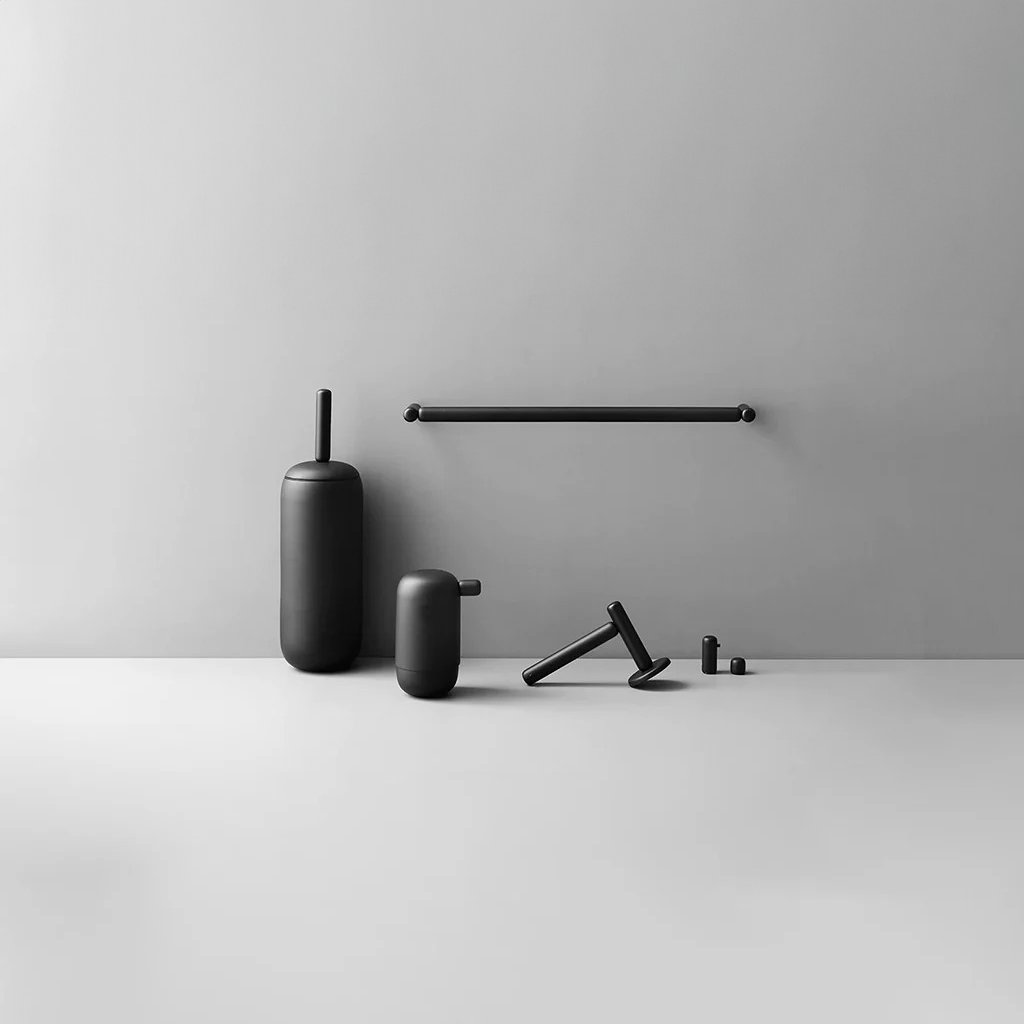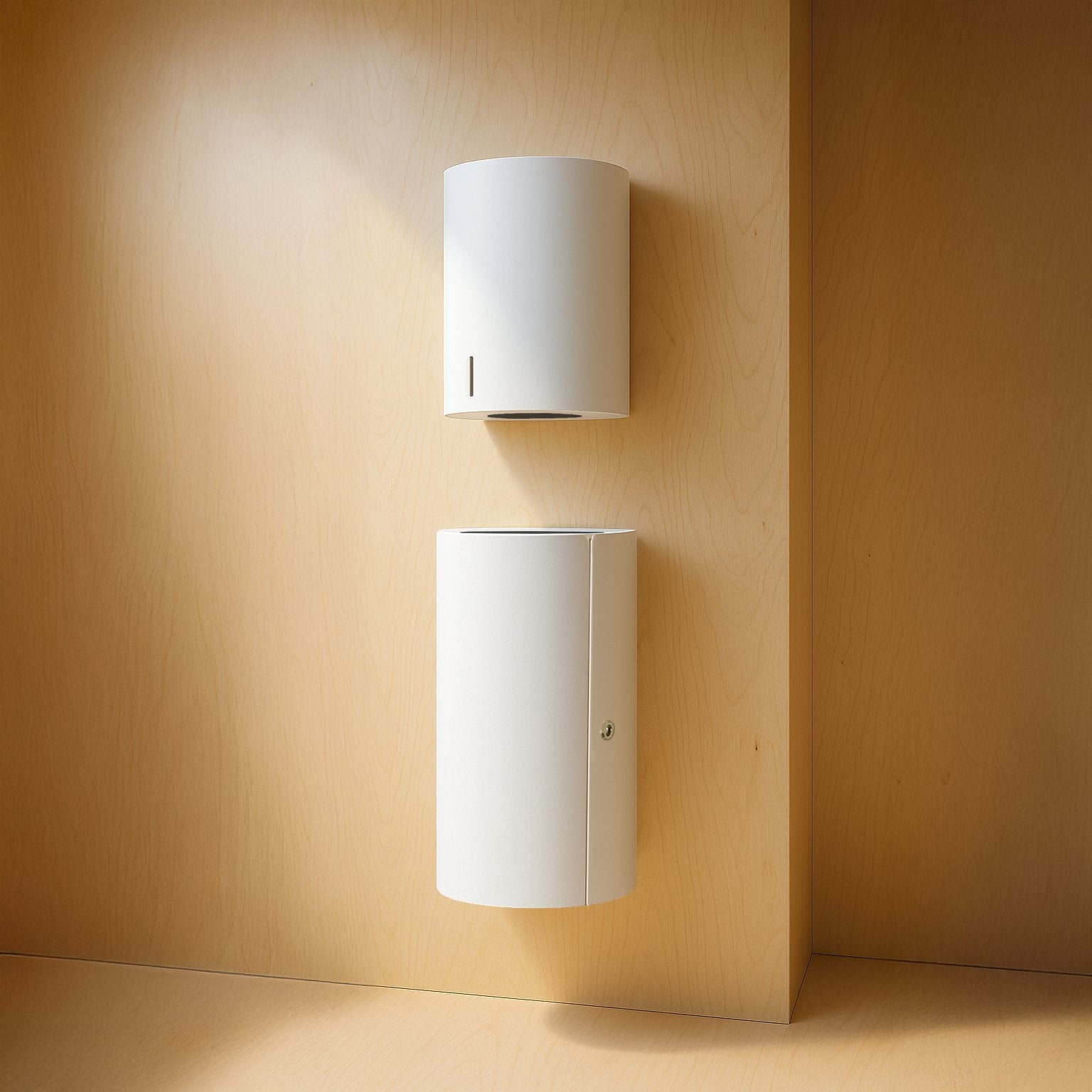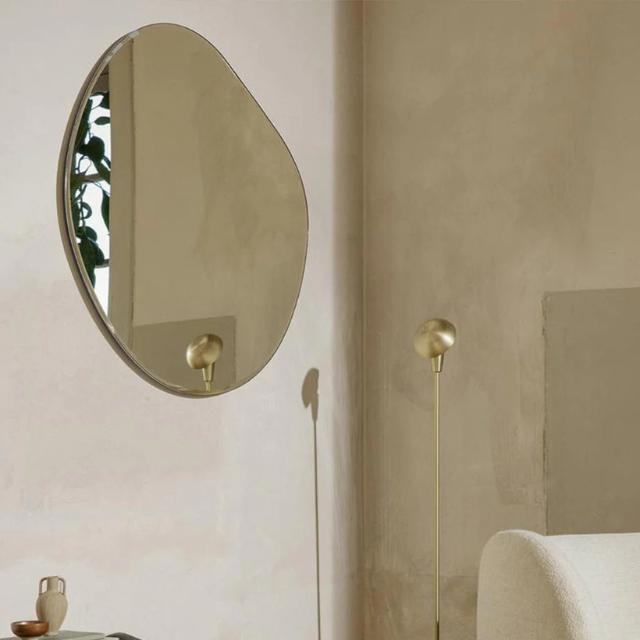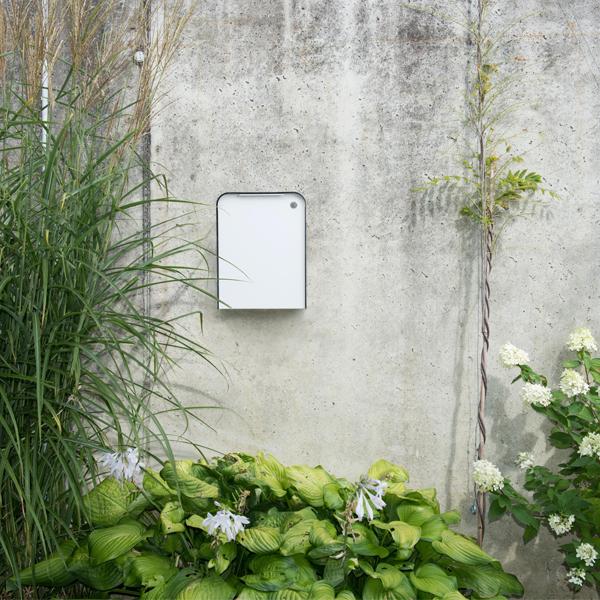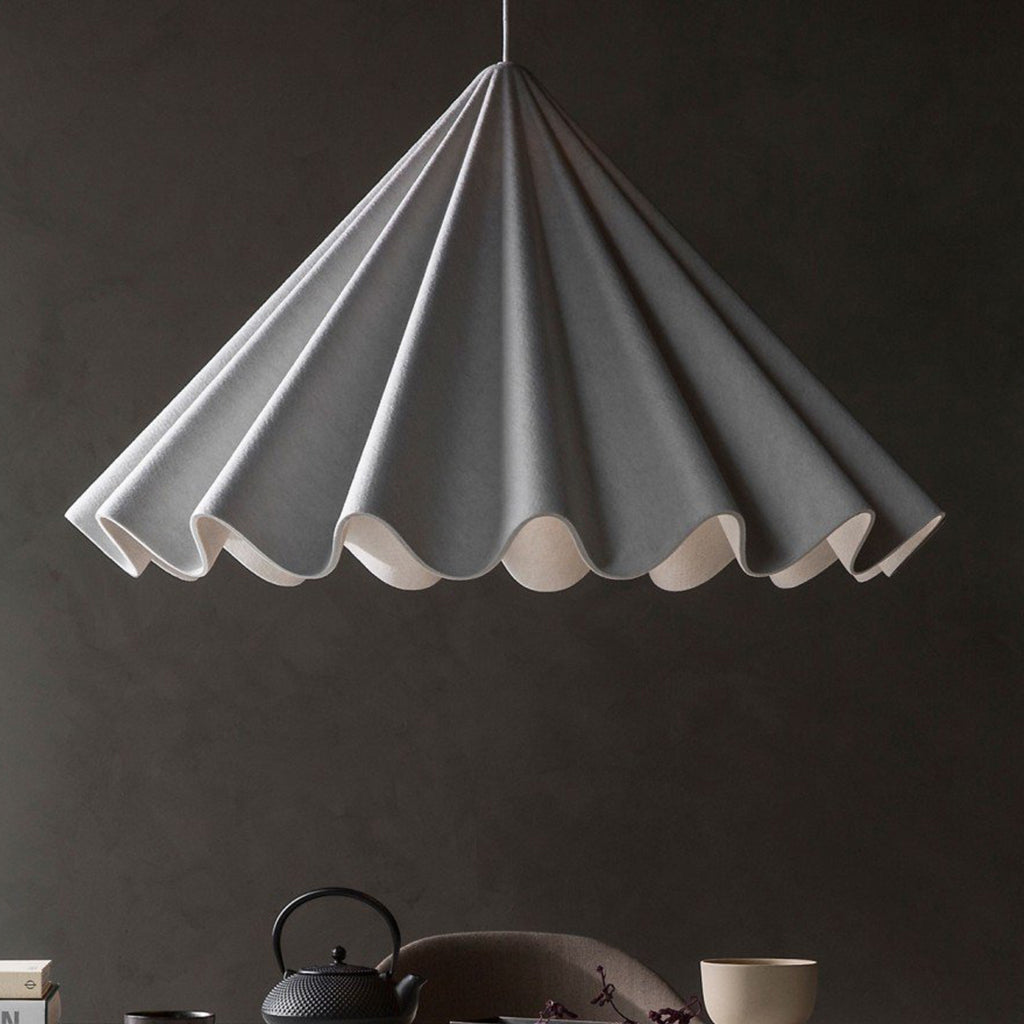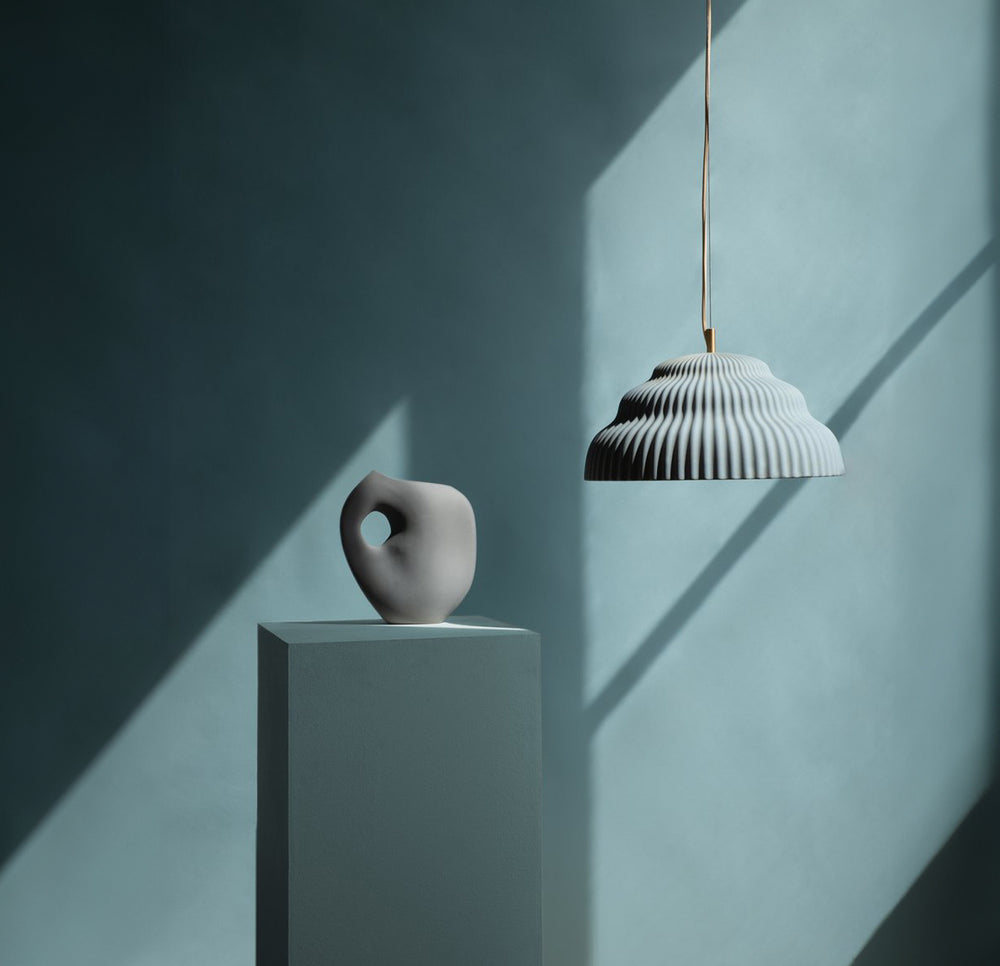Hardware Finishes - Part One: What They Are and How to Keep Them Looking Great
This is Part One of our Ongoing finish guide. For a deep dive into Living Finishes please go to Part Two, here. To learn more about PVD and Powder Coating please go here.
Basic Hardware Finishes From A - Z
Today, more than ever before, people notice the details. When you walk into a space, what do you see? How does it make you feel? Do the finishes stand out? Or blend in?
They say that first impressions last. The same is true when it comes to the visual appeal of your home. If you want to make sure that people see your home in the best possible light, it’s important that you invest in quality architectural finishes from the start. However, how do you pick the right finish for your space? Each has its own attributes, durability and different ways to care for them, making some perfect for the highly trafficked kitchen or others better to upgrade a precious antique.
Aluminium
Aluminium is a metal that is often used for architectural hardware like handles. There are many ways to finish aluminium, but satin aluminium is one of the most popular finishes as it is durable and long lasting. However, aluminum is not indestructible, and can oxidize or corrode if not treated properly.
Oxidized aluminum is giving the metal a chalky grey appearance. This can be cleaned up with a lightly acidic household cleaner, such as vinegar, or aluminum polish. Uncoated aluminum is also easily corroded, so take care to use only gentle and tested products on your finish.
With coated aluminium, you should use a dry cloth to wipe down the area with your favourite household cleaner or soap.
Aluminum Quick Sheet
| Look: | Aluminum is a clear grey metal with a neutral undertone. There is minimal variation in tone, so matching existing hardware should be done without too much difficulty. Can be anodized in different colours. No acids can be used or they will corode May scratch easily, compared with stainless steel. |
| Cleaning and care: | Anodized aluminum is fingerprint and smudge resistant. Use a non corrosive and gentle cleaner on aluminum only when required. Use a dry cloth to remove cleaner or polisher after use. |
| Pros: | Doesn't rust, very light weight, recyclable. |
|
Cons: |
If not given an anodized coating can corrode or oxide. Scratches more easily than stainless steel. |
Brass

Brass is an alloy of copper, zinc, and other factors, resisting corrosion. Brass is available in a wide range of unique alloy grades. Each brass alloy has been developed to provide its distinctive beneficial qualities. Because of this it's important if you are matching to existing hardware in your home, to get samples of brass before purchase. The colour can very between manufacturers, and alloys, greatly.
When it comes to brass, there are three different finishes: polished brass, satin brass and antiqued brass. Brass can be left natural or lacquered. Natural, or un-lacquered brass, will patina over time, which is part of it's charm.
Polished Brass, is a shiny brass that has been buffed to a shine. It has a mirror appearance, that can help showcase details.
This is the most common type of finish for architectural hardware is Satin Brass. Satin is achieved by polishing the surface until it becomes smooth and reflective then rubbing it with oil until it creates a sheen.
Antiqued Brass, gives an old look and feel as if your item has been around for years. This type of finish requires coating the brass with copper chloride which reacts with air to create a patina on top of the metal. It will not continue to patina overtime.
Brass Facts
| Look: | Brass is a yellow metal that can very from pale to deeper tones. Compared with bronze, it can have almost a greenish tinge. |
| Cleaning and care: | Brass, particular polished brass, will show fingerprints. If unlacquered these will tanish and oxidize overtime - which can be desirable. To keep unlaquered brass bright, use a non corrosive and gentle cleaner. Use a dry cloth to remove cleaner or polisher after use and to avoid water spots. For lacquered finishes, don't use chemicals of any kind, including soaps abrasive cleaners, window or kitchen cleaners. Use of these products is damaging to the protective lacquer and may change the appearance of the piece. |
| Pros: | Stronger than comparable warm metals, versatile within multiple styles |
|
Cons: |
Can require maintenance to keep clean, untarnished. Lacquer can wear away overtime. |
For more information on unlaquered brass go to our Living Finish Guide here.
Bronze and Anodized Bronze
Bronze is an alloy of copper mixed with about 12% tin, which adds to its strength and corrosion resistance. For thousands of years, bronze has been used for coins, statues, doors, tools, weapons, candlesticks, armor, musical instruments, and many other objects. Like copper, it has natural corrosion resistance.
Bronze is more of a dull gold than a red metal, and is warmer than copper. Bronze and anodized bronze are both finishes that come in a variety of hues. Bronze is a natural metal, while anodized bronze is colored with heat and chemicals. Both types are available in matte, satin and polished finishes. You can seal them with wax or polyurethane to keep the finish looking shiny and new.
Bronze Age
| Look: | Bronze is a warm toned metal that can very from pale to deeper tones. Compared with brass it is warm. Due to the manufacturing process, Bronze can have small rings on it's surface. |
| Cleaning and care: | Bronze can oxidize over time leading to a greenish cast. Clean with warm soap and water and wax while the metal is still warm to prevent oxidization. |
| Pros: | Because its corrosive resistance, bronze is recommended for coastal homes with salty air. |
|
Cons: |
Bronze is more porous than brass and can develop shrinkage cavities over time. Bronze does oxidize. |
For more information on unlaquered bronze and oxidized bronze go to our Living Finish Guide here.
Chrome

Polished Chrome is a beautifully shiny finish that’s resilient and versatile. It can be applied to any metal, such as steel, aluminum or brass. The shine can be easily restored with the right cleaning products and methods. Polished chrome will last as long as you use it properly.
Cool Chrome
| Look: | Chrome hardware adds drama and reflects light in this bathroom. Shiny and cool, chrome matches easily to other silver metals and to itself. |
| Cleaning and care: | Chrome is moderately durable, and easy to clean. Avoid abrasive cleaners. Add dish soap to a bucket of warm water, dip a soft cloth or nonabrasive sponge into the solution. |
| Pros: | Versatile, durable and easy to care for. Very easy to match to other chrome or other silver metals. |
|
Cons: |
Can show water splashes and fingerprints. Once cracked, it loses its protective abilities and is susceptible to rust and corrosion. |
Copper

Copper is attractive finish that can be polished to a high shine. It has a natural patina that develops over time. Copper is an excellent choice for kitchens and high traffic areas due to its durability, resistance, but it is a living finish which means it will show signs of use and wear.
Copper is a clear red-orange tone, but as it is made of different alloys matching different coppers can be difficult. Copper does oxidize overtime, but is easy to clean with household cleaners.
Copper
| Look: | Copper is a warm clear red-orange that can range from light to deep depending on it's allow. Copper also oxidizes to various degrees, resulting in a green cast if not cared for. It has a living patina that adds to its charm. |
| Cleaning and care: | Clean copper with a commercially available cleaner like “Bar Keepers Friend” or “Comet” then polish with lemon oil or raw linseed oil. Always test cleaners in an inconspicuous place when using for the first time. |
| Pros: | Attractive, unique. Copper is a natural antimicrobial, and will not rust or corrode. |
|
Cons: |
Can be expensive compared to other materials. It’s work to keep it shiny, unless you let it oxidize naturally Susceptible to scratches and dents. Difficult to match to between manufacturers. |
For more information on unlaquered copper go to our Living Finish Guide here.
Satin and Antique Nickel

Nickel is a gorgeous metal finish that is both warm and silver. A lustrous, bright metal finish that is especially appropriate for modern designs or traditional spaces.
Antique Nickel is a traditional metal finish that has the look of nickel but with a more subdued, antique tone. Both finishes can be polished to create a high-luster shine or left to patina naturally with age and use. To keep your finishes looking great, use a dry cloth to clean them regularly and polish them when they start to lose their shine.
Lovely Nickel
| Look: | A warm and soft metal that matches with cooler silver finishes. |
| Cleaning and care: | Brushed nickel is one of the most durable finishes available, and tends to keep its appearance up longer than chrome. Clean with soap and water |
| Pros: | Nickel is available in brushed and polished finishes. It's colour looks close to sterling silver and is warmer and richer than chrome. Polished nickel is easy to match between brands. |
|
Cons: |
Unless lacquer finished will tarnish over time. |
Satin and Polished Stainless Steel

Two of the most popular finishes are satin and polished stainless steel. These two finishes have slightly different attributes. Satin is a very trendy finish, with a matte-like appearance that’s still shiny. Polished stainless steel has a high gloss, mirror-like surface that goes well in any room.
Stainless steel is easy to keep clean and very durable. Even with heavy use, it is still scratch resistant and won’t dent easily. If you expect your fixtures to get heavy use, stainless steel is often the better option.
To read more about stainless steel go to our post The Story of Stainless Steel.
Simple Stainless
| Look: | A cool neutral metal that can be polished or brushed. Relatively easy to match between metals and different manufacturers |
| Cleaning and care: | Easy to clean, non corrosive and naturally anti-microbial. An easy to care for and durable finish. |
| Pros: | Solid stainless is difficult to scratch, non corrosive and durable. If it is scratched it can be buffed or sanded. Recyclable. |
|
Cons: |
Heavy and may show dirt easily. |




